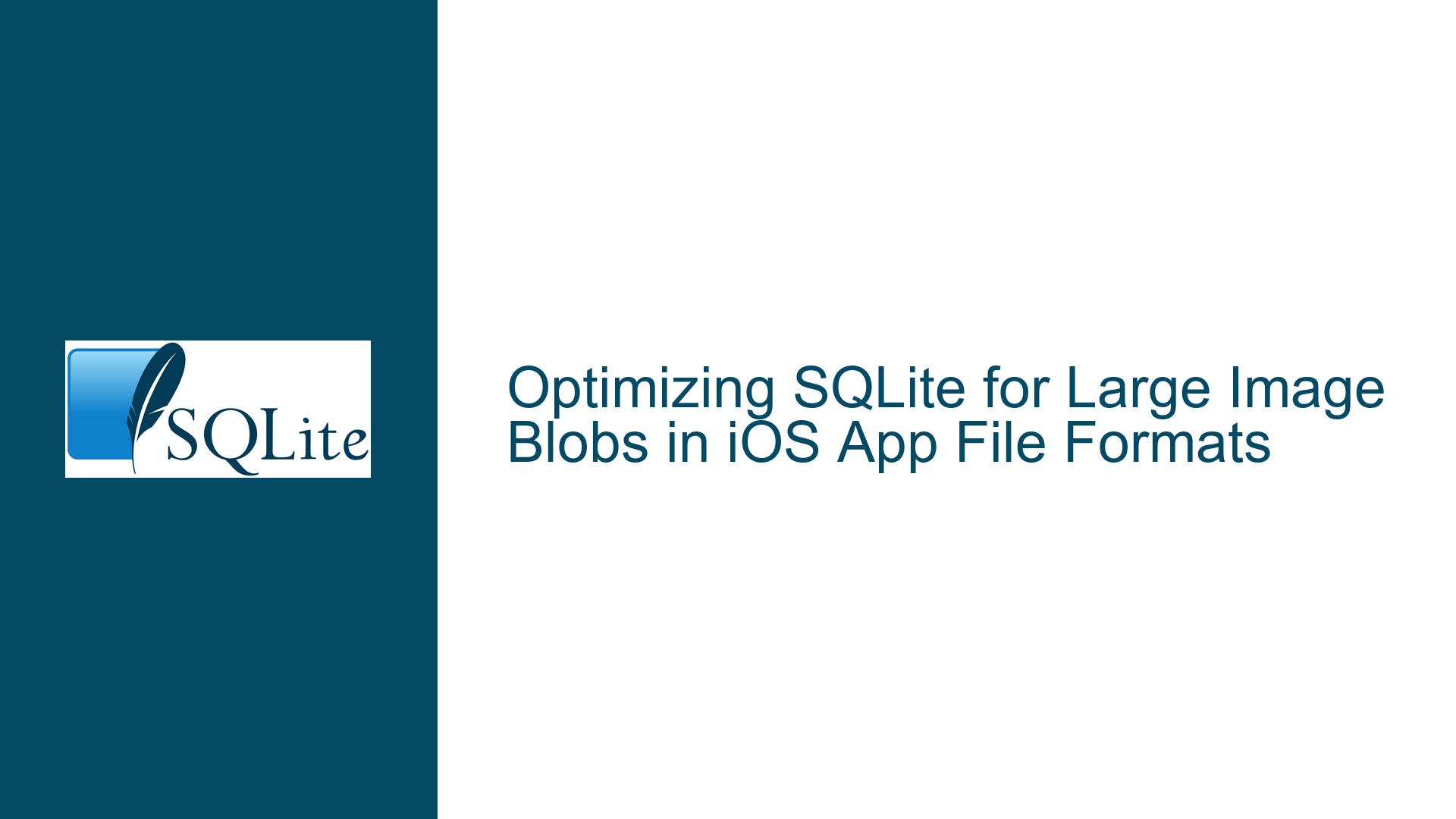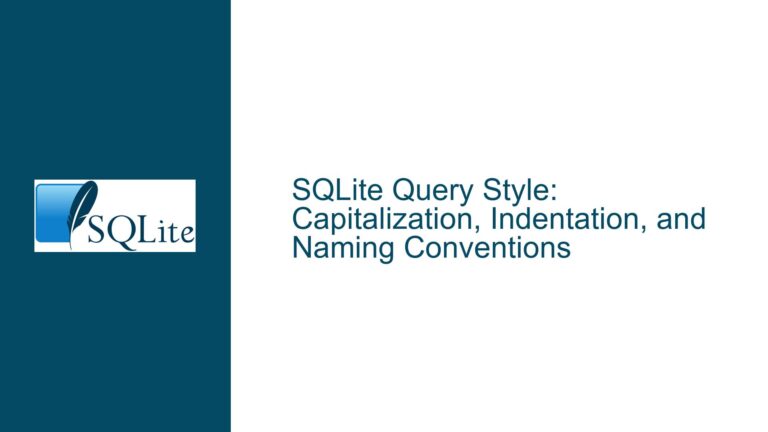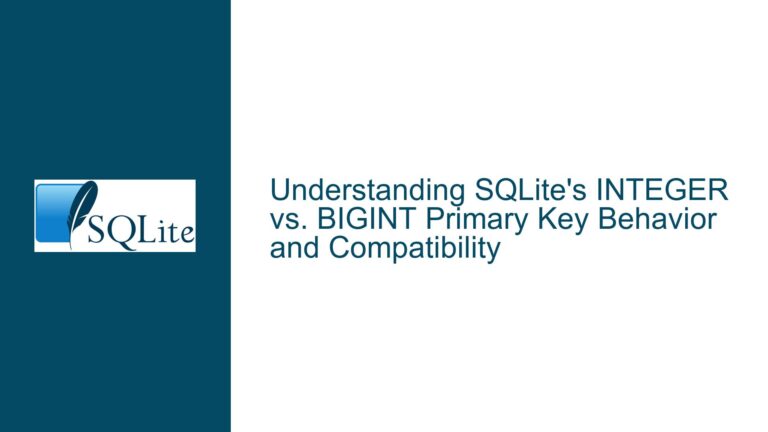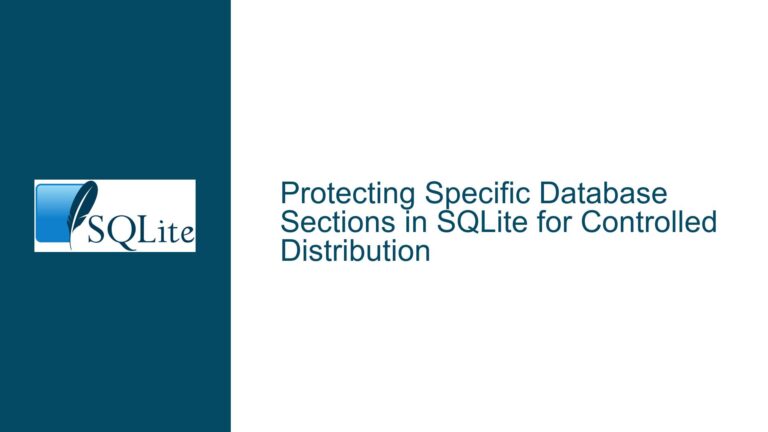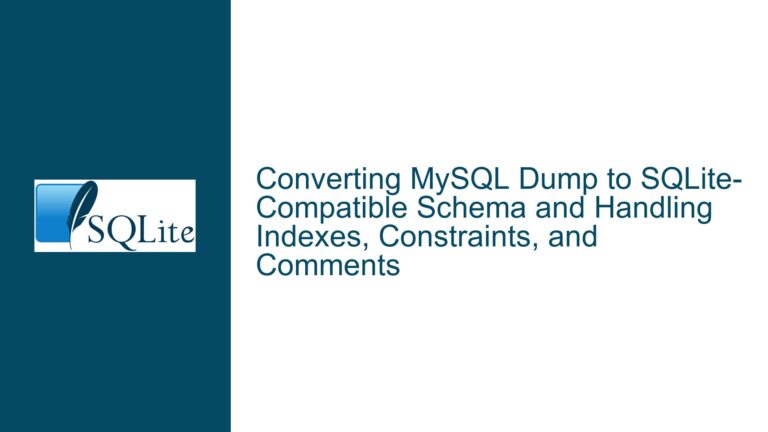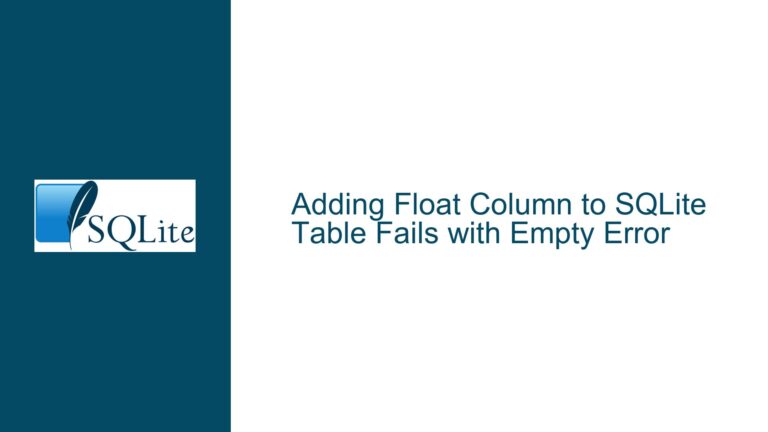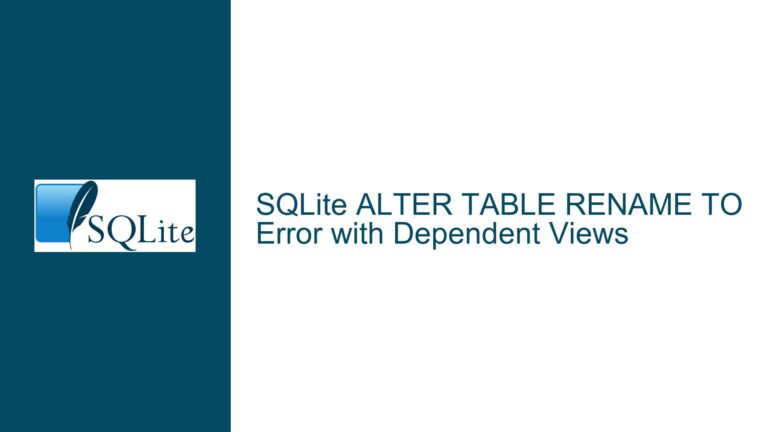Optimizing SQLite for Large Image Blobs in iOS App File Formats
Performance Tradeoffs Between SQLite BLOBs and External Files for Image Storage
The decision to use SQLite as a file format for applications handling large binary objects like images requires balancing performance characteristics with architectural benefits. A primary challenge arises when storing high-resolution textures, gradients, or compressed bitmaps (ranging from 100 KB to 2 MB) directly in SQLite databases versus maintaining them as external files. While SQLite offers transactional safety, a unified storage format, and query capabilities, raw read/write performance for large BLOBs may lag behind direct filesystem operations depending on hardware constraints, access patterns, and data size.
SQLite’s internal BLOB storage mechanism operates by embedding binary data within database pages, which introduces overhead during retrieval and modification. External files bypass this by leveraging filesystem caching and direct byte access. However, SQLite provides atomicity, crash recovery, and simplified backup/restore workflows. The performance crossover point—where external files become faster than SQLite BLOBs—depends on factors like BLOB size, I/O subsystem speed, and concurrency requirements. For iPadOS apps managing frequent small writes or requiring transactional consistency for image layers, SQLite may still outperform fragmented filesystem operations despite larger BLOBs.
Key Factors Influencing BLOB Storage Performance in SQLite
I/O Amplification from Database Page Management
SQLite stores BLOBs within database pages (default size: 4 KB). A 2 MB BLOB spans 512 pages. Reading the entire BLOB requires loading all relevant pages into memory, even if only a subset of the data is needed. This "I/O amplification" penalizes random access patterns but benefits sequential reads. External files avoid this by allowing the OS to manage disk sectors directly, enabling mmap-based access or partial reads.
Write Amplification and Journaling Overhead
Modifying a BLOB in SQLite triggers write-ahead logging (WAL) or rollback journal updates, which involve copying entire pages to temporary storage. For large BLOBs, this duplicates megabytes of data during each transaction. Filesystem writes can append changes incrementally or overwrite specific regions without journaling overhead, though they lack atomicity guarantees.
Filesystem Caching and Memory Pressure
Modern OSes aggressively cache frequently accessed files in RAM. External image files benefit from this transparent caching, reducing disk I/O. SQLite’s page cache competes with the OS cache, potentially doubling memory usage for the same dataset. On memory-constrained iOS devices, this can lead to premature cache evictions and increased latency.
Concurrency and Locking Granularity
SQLite provides database-level locking by default, meaning a long-running BLOB write can block other queries. External files allow finer-grained locking (e.g., per-file mutexes), improving parallelism. Enabling WAL mode in SQLite mitigates this by allowing readers and writers to coexist, but large BLOBs still monopolize write transactions.
Storage Subsystem Characteristics
NVMe-based iPad Pro devices have low-latency I/O, making SQLite’s page-oriented access less problematic. Older devices with slower NAND storage may exhibit pronounced stalls during large BLOB operations. The efficiency of filesystem metadata structures (e.g., APFS clones for copy-on-write) also affects external file performance.
Benchmarking, Configuration, and Schema Strategies for Optimal BLOB Handling
Step 1: Establish Baseline Performance Metrics
Modify the SQLite fasterthanfs test harness (from fasterthanfs.html) to reflect your BLOB size distribution. Adjust parameters like:
BLOB_SIZE: Test 100 KB, 1 MB, and 2 MB payloads.NUM_ITERATIONS: Measure throughput over 1,000+ operations to account for filesystem cache warm-up.CONCURRENCY_LEVEL: Simulate multi-threaded read/write patterns typical in a drawing app.
Run benchmarks on physical iPad hardware under realistic storage conditions (e.g., 50% storage capacity). Compare SQLite BLOB access times against fread/fwrite on external files. Capture metrics for:
- Sequential writes: Appending new image layers.
- Random reads: Jumping between historical canvas states.
- In-place updates: Modifying existing textures.
Step 2: Optimize SQLite Configuration for Large BLOBs
- Increase page size: Set
PRAGMA page_size = 8192;to reduce I/O amplification for multi-megabyte BLOBs. Larger pages decrease the number of disk accesses per BLOB but increase memory per page cache entry. - Expand cache size: Use
PRAGMA cache_size = -kibibytes;to allocate sufficient memory for working sets. For 2 MB BLOBs, a 64 MB cache holds ~32 active blobs. - Enable mmap: Configure
PRAGMA mmap_size = 1073741824;to let the OS manage file mapping, reducing memcpy overhead. - Use incremental I/O: Leverage
sqlite3_blob_open()for streaming BLOB access without loading entire rows into memory.
Step 3: Schema Design and BLOB Storage Strategies
- Separate BLOBs into dedicated tables: Isolate image data from metadata to avoid row fragmentation.
CREATE TABLE canvas_images (
id INTEGER PRIMARY KEY,
layer_id INTEGER REFERENCES layers(id),
image_data BLOB,
created_at DATETIME
) WITHOUT ROWID;
- Compress BLOBs in-app: Offload compression to application code using zlib or Apple’s Compression framework before insertion. SQLite’s built-in compression extensions add overhead.
- Shard BLOBs across databases: Partition images by layer or timeline into separate SQLite files, reducing contention.
Step 4: Leverage Filesystem Hybrid Approaches
- External content-addressable storage: Store BLOBs in a directory with SHA-256 filenames, while SQLite manages deduplication and metadata.
- SQLite as an index: Use the database for transactional updates to external file references. Wrap filesystem operations in SQLite’s transactional control via manual
BEGIN/COMMITstatements.
Step 5: Monitor and Tune Based on Real-World Usage
- Profile with SQLite’s
sqlite3_stmt_scanstatus_v2: Identify slow queries involving BLOBs. - Use
PRAGMA analysis_limit=4000; PRAGMA optimize;: Gather statistics for query planner optimizations. - Monitor I/O pressure via
ios_system_state(3): Detect excessive page cache evictions or filesystem throttling on iPadOS.
Step 6: Evaluate Advanced SQLite Features
- Virtual tables: Implement a custom virtual table that maps BLOBs to external files, combining SQL queryability with direct I/O.
- SQLite Archives: Use the
.archivecommand to bundle external files into a ZIP-like database, though this sacrifices fine-grained query control.
Final Considerations
For iPadOS apps requiring ACID compliance across complex canvas states, SQLite’s BLOB storage often justifies its performance penalty through simplified undo/redo stacks and crash recovery. Implement a fallback mechanism that dynamically offloads BLOBs to external files when SQLite’s latency exceeds thresholds (e.g., >16ms per frame). Continuously re-evaluate as Apple introduces new storage APIs, such as UIDocument integrations or Metal-accelerated texture streaming.
